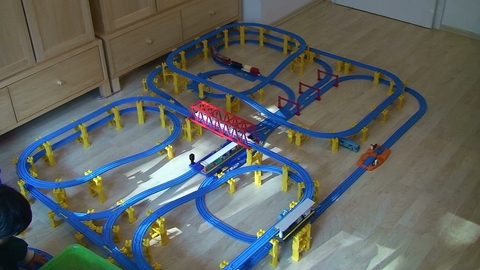In order to be maintained within the desired range, the values of regulated variables must be continuously monitored and adjusted. Accordingly, all homeostatic systems have two essential components: Controllers and Plants.The Controllers monitor the value of the regulated variable (X), compare it to the reference value (or in Hardy's terms, set point) (X'), and generate a signal that isThe autonomic nervous system is important for homeostasis because its two divisions compete at the target effector. The balance of homeostasis is attributable to the competing inputs from the sympathetic and parasympathetic divisions (dual innervation). At the level of the target effector, the signal of which system is sending the message isset point A normal or target value for a regulated internal parameter, such as body temperature or the level of hydration. Postquiz 1. Which component of a homeostatic system sends instructions based on sensory information? a. Effector b. Set point c. Sensor d. Integrator 2.Integrator compares sensory information to a target value.The VN is the principal component of the parasympathetic nervous system and it integrates peripheral information to the CNS through projections to the nucleus tractus solitarius (NTS), the first
Autonomic Reflexes and Homeostasis | Anatomy and Physiology I
Similarly, there is evidence of an SENSORY HOMEOSTASIS 117 efferent extrareticular system affecting response in the afferent somesthetic system (Chambers et al., 1960). These results suggest that the reticular formation is not in complete charge of all sensory commerce, and indeed, plays a coarse role in efferent influence.Homeostasis is the ability of living systems to maintain a steady and uniform internal environment to allow the normal functioning of the systems. it tallies the changed value to its normal value. An effector is a target which is acted upon by the control unit to bring the value of variable back to normal.A negative feedback system has three basic components (Figure 1.10a). A sensor, also referred to a receptor, is a component of a feedback system that monitors a physiological value. This value is reported to the control center. The control center is the component in a feedback system that compares the value to the normal range. If the valueIntegrator. (An integrator sends instructions to an effector based on sensory information.) Which component of a homeostatic system compares sensory information to a target value?

PDF Homeostasis Tutorials & Quiz
which component of a homeostatic system compares sensory information to a target value? asked Feb 1 in Other by manish56 (-34,887 points) 0 votes. 1 answer. the process by which our sensory systems transform stimulus energies into neural impulses is called.Which component of a homeostatic system compares sensory information to a target value? Integrator. Which component of a homeostatic system perceives changes in some parameter of the environment? Sensor. Which of the following actions acts to warm a homeothermic body? Shivering.Cortical areas conveying sensory and behavioral influences on feeding provide input to the NAc, whereas the LHA is the target of homeostatic and circadian influences. Note that the LHA has a strong input to the NAc from neurons containing melanin-concentrating hormone (MCH), which are believed to be excitatory for feeding.The autonomic nervous system is important for homeostasis because its two divisions compete at the target effector. The balance of homeostasis is attributable to the competing inputs from the sympathetic and parasympathetic divisions (dual innervation).Learn how organisms maintain homeostasis, or a stable internal environment. Learn how organisms maintain homeostasis, or a stable internal environment. If you're seeing this message, it means we're having trouble loading external resources on our website. The circulatory and respiratory systems.
Methylphenidate : Wikis (The Full Wiki)

複線ポイントレール④: SketchUpでプラレール

http://www.gogofinder.com.tw/books/pida/6/ OPTOLINK 2013 ...

http://www.gogofinder.com.tw/books/pida/6/ OPTOLINK 2013 ...

http://www.gogofinder.com.tw/books/pida/6/ OPTOLINK 2013 ...

http://www.gogofinder.com.tw/books/pida/6/ OPTOLINK 2013 ...

http://www.gogofinder.com.tw/books/pida/6/ OPTOLINK 2013 ...

複線ポイントレール④: SketchUpでプラレール

Chapter 5 - Rhetorical Modes - Let's Get Writing!

Schematic diagram of pain pathways involved in pain ...

http://www.gogofinder.com.tw/books/pida/6/ OPTOLINK 2013 ...

複線ポイントレール④: SketchUpでプラレール

複線ポイントレール④: SketchUpでプラレール

複線ポイントレール④: SketchUpでプラレール

http://www.gogofinder.com.tw/books/pida/6/ OPTOLINK 2013 ...

http://www.gogofinder.com.tw/books/pida/6/ OPTOLINK 2013 ...

複線ポイントレール④: SketchUpでプラレール

複線ポイントレール④: SketchUpでプラレール

http://www.gogofinder.com.tw/books/pida/6/ OPTOLINK 2013 ...

複線ポイントレール④: SketchUpでプラレール

http://www.gogofinder.com.tw/books/pida/6/ OPTOLINK 2013 ...







No comments:
Post a Comment